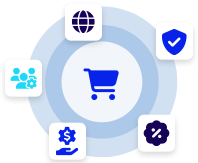Usage-based pricing, also known as consumption-based pricing or pay-as-you-go pricing, is a pricing model in which the cost of a product or service is directly tied to the customer’s usage or consumption of that product or service. In the context of the SaaS industry, usage-based pricing refers to charging customers based on the amount or level of usage of the SaaS software or services.
Here’s why usage-based pricing is relevant for SaaS:
- Flexible and Scalable Pricing: Usage-based pricing offers flexibility to SaaS companies and customers alike. Instead of fixed pricing plans, customers are charged based on their actual usage, which can align with their specific needs and budgets. This model allows customers to start with a lower cost and scale their usage as their requirements grow, making it attractive for both small businesses and enterprises.
- Cost Optimization: Usage-based pricing enables customers to optimize their costs by paying only for the resources they actually consume. It eliminates the need to pay for unused or underutilized features or capacity, providing cost savings for customers. This approach is particularly beneficial in the SaaS industry, where customers’ usage patterns can vary significantly based on factors such as user count, data volume, or API requests.
- Value-Based Proposition: Usage-based pricing aligns the cost of the SaaS software or service with the value it provides to the customer. Customers perceive value when they are charged proportionally to their actual usage and can easily see the relationship between usage and cost. This pricing model encourages customers to fully utilize the software and extract maximum value from their investment.
- Fairness and Transparency: Usage-based pricing promotes fairness and transparency in the SaaS industry. Customers pay for what they use, and the pricing is directly tied to their consumption. This pricing model eliminates any ambiguity or hidden costs, ensuring customers have a clear understanding of how their usage translates into pricing, fostering trust and customer satisfaction.
- Incentivizing Adoption and Growth: Usage-based pricing can incentivize customer adoption and drive growth for SaaS companies. Lower entry costs and the ability to pay based on usage encourage potential customers to try the software without significant upfront commitments. As customers’ usage and needs increase, their costs grow accordingly, which can lead to revenue growth for the SaaS provider.
- Upselling and Expansion Opportunities: With usage-based pricing, SaaS companies have opportunities to upsell or cross-sell additional features, modules, or higher-tier plans based on customers’ increasing usage or needs. As customers consume more resources or reach certain usage thresholds, SaaS providers can offer value-added services or premium plans, leading to revenue expansion.













